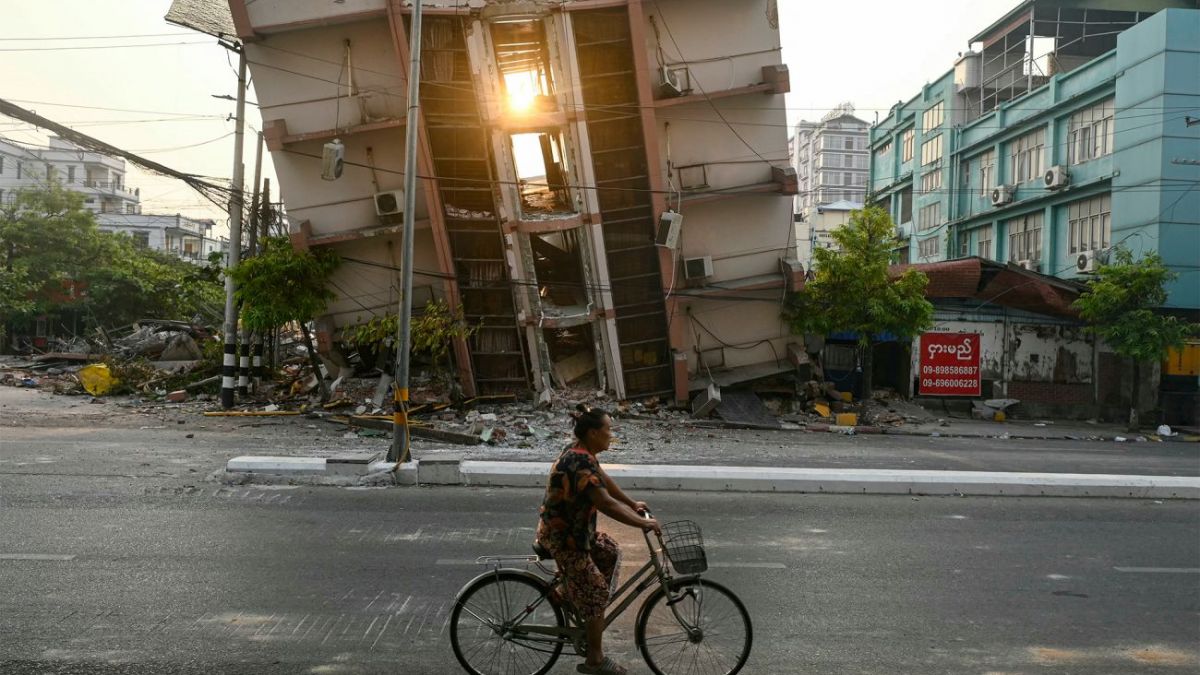Myanmar quake: Deaths exceed 3,000 as aid groups warn of disease risk

As Myanmar grapples with the aftermath of one of its worst earthquakes in a century, concerns are mounting over the growing threat of disease, with extreme weather worsening an already dire humanitarian crisis.
The magnitude 7.7 earthquake that struck last Friday has now claimed 3,085 lives, according to the ruling junta, with another 4,715 injured and 341 people still unaccounted for.
The tremor rocked regions housing more than 28 million people, flattening entire communities and destroying essential infrastructure, including hospitals and homes.
International aid agencies are warning that a looming public health disaster could follow the physical destruction, especially in areas such as Mandalay, Sagaing, and the capital, Naypyitaw, where survivors have been forced to camp outdoors due to fear of aftershocks and damaged buildings.
The World Health Organization said on Thursday that conditions in the quake-hit zones were ripe for outbreaks of waterborne diseases, including cholera, which remains a pressing concern.
"Cholera remains a particular concern for all of us," said Elena Vuolo, deputy head of WHO’s Myanmar office.
She cited last year’s outbreak in Mandalay and said this disaster could set off a similar crisis. Vuolo said the situation was worsened by the destruction of healthcare infrastructure, with nearly half of facilities affected and some hospitals in Mandalay and Naypyitaw completely destroyed.
WHO is mobilizing $1 million (Sh129.1 million) worth of medical and emergency supplies, including body bags, to the affected areas.
Meanwhile, Vuolo described scenes of desperation as families endured daytime temperatures of 38°C (100°F) in makeshift shelters, with some hospitals having to treat patients in open spaces.
She also warned that prolonged displacement could lead to a rise in skin disease, malaria, and dengue fever—especially as poor sanitation and stagnant water become widespread in temporary camps.
Adding to the distress, meteorological authorities have warned of unseasonal rains starting Sunday through to April 11.
Relief workers fear that the expected downpours will worsen conditions for displaced communities already struggling in exposed camps.
"I've heard that in the next day or two there are rains (expected)," said Titon Mitra, the Myanmar representative of the United Nations Development Programme, during a visit to Sagaing.
“If that hits, we’ve got people, lots of people now, in temporary shelters, makeshift camps out on the streets, and that’s going to be a real problem.”
Mitra also pointed to the heightened risk of waterborne illnesses spreading rapidly among the displaced, particularly if clean water supplies remain disrupted and health services are not fully restored.
The scale of devastation and the threat of disease are being compounded by Myanmar’s ongoing civil war.
Since the 2021 military coup that toppled the elected government of Aung San Suu Kyi, fighting between junta forces and rebel groups has hindered the delivery of aid across the country.
Calls from humanitarian organizations to access all quake-hit areas have intensified amid reports that some regions remain unreachable due to conflict.
On Wednesday, state broadcaster MRTV announced that the junta had declared a 20-day ceasefire to facilitate relief efforts.
However, it warned that the military would “respond accordingly” if attacked by rebel forces.
The announcement came a day after a major rebel alliance also declared a ceasefire to allow humanitarian work to proceed.
Despite the unfolding disaster, state television reported that junta leader Min Aung Hlaing would leave the country on Thursday to attend a regional summit in Bangkok.
The rare foreign visit has raised eyebrows given the urgent needs at home.
Min Aung Hlaing is widely seen as a pariah figure in the international community and remains the subject of Western sanctions and an International Criminal Court investigation.
Meanwhile, search and rescue operations continued in neighboring Thailand, where the earthquake caused the collapse of a skyscraper under construction in Bangkok.
Emergency crews are using bulldozers and mechanical diggers to sift through 100 tons of debris.
So far, 15 people have been confirmed dead, and 72 others are still missing.
Thailand’s total death toll now stands at 22.
With the combined challenges of political conflict, widespread destruction, and dangerous weather, the situation in Myanmar remains volatile.
Aid agencies say time is running out to prevent further suffering as thousands remain vulnerable to illness, hunger, and exposure.
